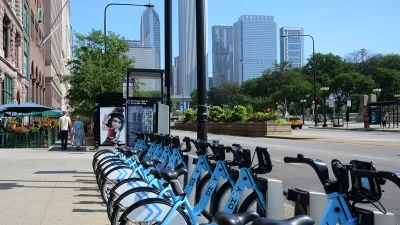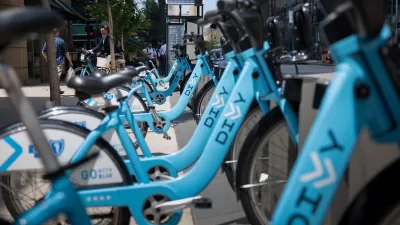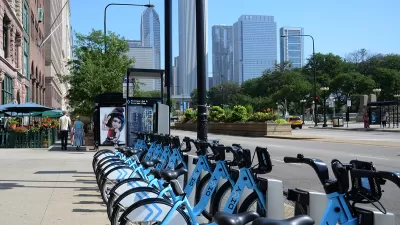Kerida Roland is an African-American delivery man based in Chicago's South Loop who put more than 6,000 miles on Divvy bikes in 2017.

Divvy's users are disproportionately wealthy whites, so when the agency announced its top rider was African American delivery rider from Bronzeville, the news seemed to break the narrative about bikeshare in Chicago. Kerida Roland rode 6,275 miles last year making deliveries everywhere from Hyde Park to Lincoln Park.
"Roland, a 25-year-old South Loop resident who takes delivery orders via the Postmates, Caviar, and Uber Eats smartphone apps, says his strategy isn't as crazy as it sounds," John Greenfield reports for the Chicago Reader. While using Divvy for work means he has to find stations periodically, he likes avoiding the maintenance and risk of riding his own bike. "Roland says he started using Divvy for deliveries after thieves nabbed three of his personal bikes, one of which he'd spent hundreds of dollars customizing," Greenfield reports.
So why don't more African Americans and Southsiders ride Divvy? Roland agrees with results of a study from the University of Portland which found, "Concerns about traffic safety, crime, police harassment, user fees, and liability for the bikes are factors in low ridership," Greenfield writes, but Roland goes on to say the city could do more to explain the program, particularly its benefits. Roland enjoys biking in part because it's more reliable than the El, and the freedom from traffic jams, means he knows when he will get where he's going.
FULL STORY: Divvy’s top rider of 2017 pedaled 6,000 miles while making food deliveries

Trump Administration Could Effectively End Housing Voucher Program
Federal officials are eyeing major cuts to the Section 8 program that helps millions of low-income households pay rent.

Planetizen Federal Action Tracker
A weekly monitor of how Trump’s orders and actions are impacting planners and planning in America.

Ken Jennings Launches Transit Web Series
The Jeopardy champ wants you to ride public transit.

Philadelphia Is Expanding its Network of Roundabouts
Roundabouts are widely shown to decrease traffic speed, reduce congestion, and improve efficiency.

Why Bike Lanes Are Good: An Explainer for the US Transportation Secretary
Sean Duffy says there’s no evidence that bike lanes have benefits. Streetsblog — and federal agencies’ own data — beg to differ.

California Invests Additional $5M in Electric School Buses
The state wants to electrify all of its school bus fleets by 2035.
Urban Design for Planners 1: Software Tools
This six-course series explores essential urban design concepts using open source software and equips planners with the tools they need to participate fully in the urban design process.
Planning for Universal Design
Learn the tools for implementing Universal Design in planning regulations.
Ada County Highway District
Clanton & Associates, Inc.
Jessamine County Fiscal Court
Institute for Housing and Urban Development Studies (IHS)
City of Grandview
Harvard GSD Executive Education
Toledo-Lucas County Plan Commissions
Salt Lake City
NYU Wagner Graduate School of Public Service




























